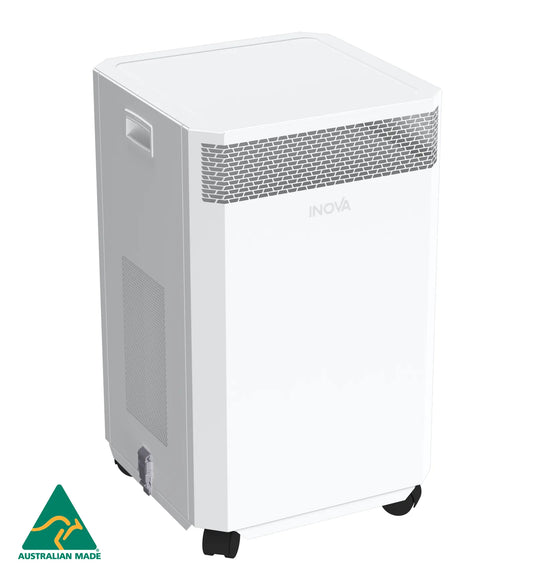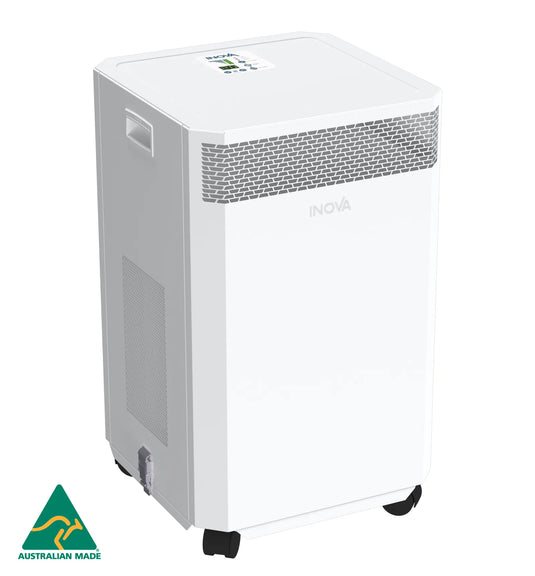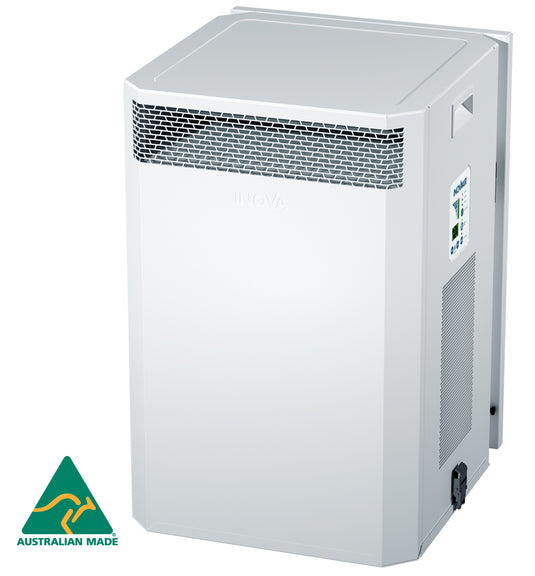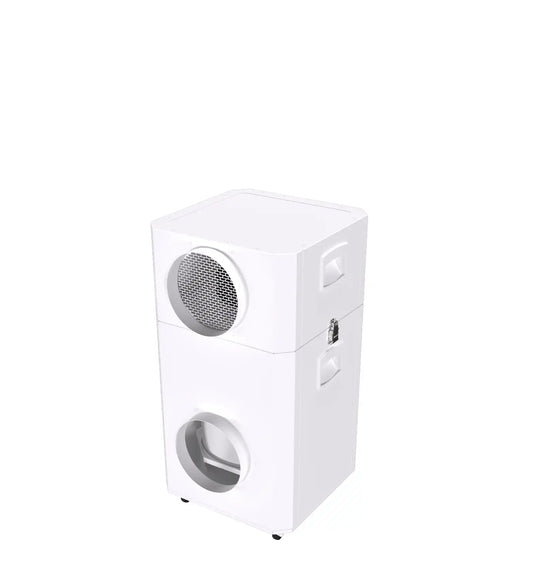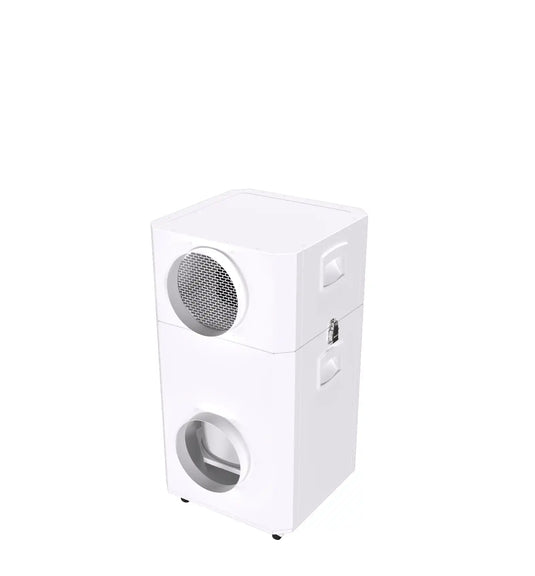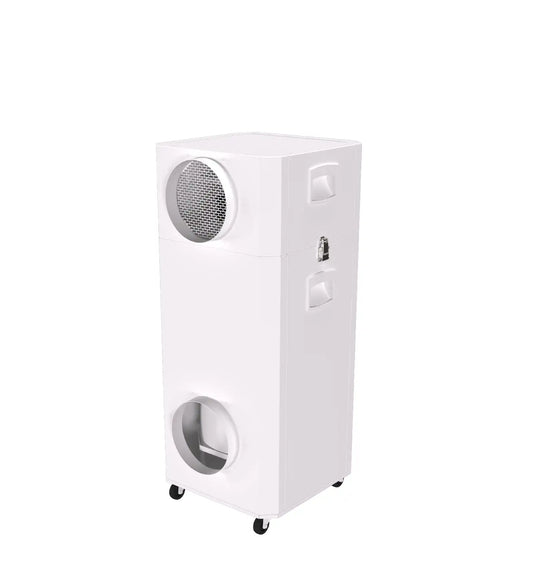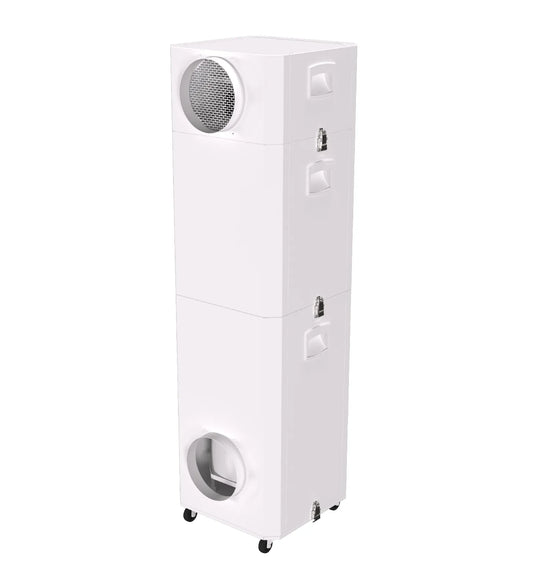The HEPA Hype: Why You Can’t Trust the Label

What **Truly** Matters for Clean Air
If you are in the market for an air purifier you’ve probably seen the word HEPA splashed across every box and website. It sounds like the gold standard—and in many ways, it is —but in the world of air purification, a single label can hide a massive difference in performance.
Here at INOVA Air Purifiers, we believe you deserve to know exactly what you're buying. That's why we’re cutting through the marketing noise to explain the critical difference between True HEPA, Medical-Grade HEPA (H13), and those vague "HEPA-type" filters.
Don't let misleading claims compromise your health.
The Three Tiers of "HEPA" Filters
The term HEPA stands for High-Efficiency Particulate Air. It's not just a fancy word; it's a filtration standard set by the U.S. Department of Energy (DOE).
The confusion starts when manufacturers use the term "HEPA" loosely, hiding inferior filter quality behind clever marketing. Here is the breakdown:
| Filter | Efficiency Standard | Particle Size | The Takeaway |
|---|---|---|---|
| HEPA-Type | No Official Standard | Often only 99% of larger particles (e.g., ≥ 2.0 microns). | AVOID! A marketing term with no certified performance. |
| True HEPA | ≥ 99.97% Efficiency (US DOE Standard) | Particles down to 0.3 microns (the most penetrating size, MPPS). | The minimum standard for a high-performance filter. |
| Medical-Grade HEPA (H13) | ≥ 99.97% Efficiency at 0.3 microns (EN 1822/ISO standards). | Particles down to 0.3 microns and often higher (e.g., 99.95% at 0.1 microns). | The ultimate standard for environments requiring the cleanest air, like hospitals. |
1. The Marketing Mirage: "HEPA-Type" or "HEPA-Style"
This is the biggest red flag in air purifier advertising. Filters labelled "HEPA-type," "HEPA-like," or "99% HEPA" DO NOT meet the official HEPA certification standard.
- The Problem: These filters may only capture a high percentage of large particles like visible dust and pollen. They often fall short when it comes to the tiny, more harmful particles - such as fine smoke, bacteria, and virus carriers - that are 0.3 microns and smaller.
- The Bottom Line: These are low-cost filters designed to look like the real thing. You are not buying a HEPA filter.
2. The Gold Standard: True HEPA
When a manufacturer genuinely uses the term True HEPA, it means the filter media must capture at least 99.97% of particles at 0.3 microns.
- Why 0.3 microns? This size is known as the Most Penetrating Particle Size (MPPS)—the hardest particle size for a filter to catch. If a filter can catch 99.97% of these, it captures both larger and smaller particles (including virus-sized aerosols) with even higher efficiency.
- The Assurance: A True HEPA filter offers verified, top-tier performance critical for allergy and asthma sufferers.
3. The Elite Tier: Medical-Grade HEPA (H13)
This is the standard we choose for all INOVA Air Purifiers. Medical-Grade HEPA, often designated as H13 according to the European EN 1822 standard, takes performance to the next level.
While the 99.97% at 0.3 micron rating is often mentioned, H13 filters often achieve 99.95% to 99.99% efficiency or better, with some testing even on 0.1 micron particles.
- INOVA’s Advantage: Our purifiers use a synthetic, non-shedding H13 Medical-Grade HEPA filter media, which is tested to capture an exceptional 99.95% of particles down to 0.1 microns (the size of many viruses and ultrafine pollution).
- Real-World Use: This level of filtration is what you find in hospitals and cleanrooms, offering the highest assurance of air purity for your home.
🚨 The Critical Takeaway: Demand Clarification
Here is the inconvenient truth: The air purifier industry is rife with vague and unregulated claims.
If a manufacturer simply says "HEPA" or "True HEPA," you have no way of knowing if they are meeting the strict performance standards without independent verification. Even some filters labelled "True HEPA" are only meeting lower H10 or H11-grade specifications.
To protect your health and your investment, you must ask the manufacturer two simple questions:
1. "What is the official HEPA grade of the filter, e.g., H10, H11, H12, or H13?"
2."What is the filter's tested efficiency (%) at the 0.3 micron size?"
A reputable manufacturer will clearly publish these specifications on their product page or in the user manual. If they use terms like "HEPA-type" or refuse to provide a specific EN 1822 or ISO standard and efficiency rating, it's a clear sign you should look elsewhere.
At INOVA Air Purifiers, we are proud to be fully transparent, providing Medical-Grade H13 HEPA filtration as our standard so that you can breathe with absolute confidence.
Ready to experience the difference of verified, Medical-Grade Air Purification? View our range.


